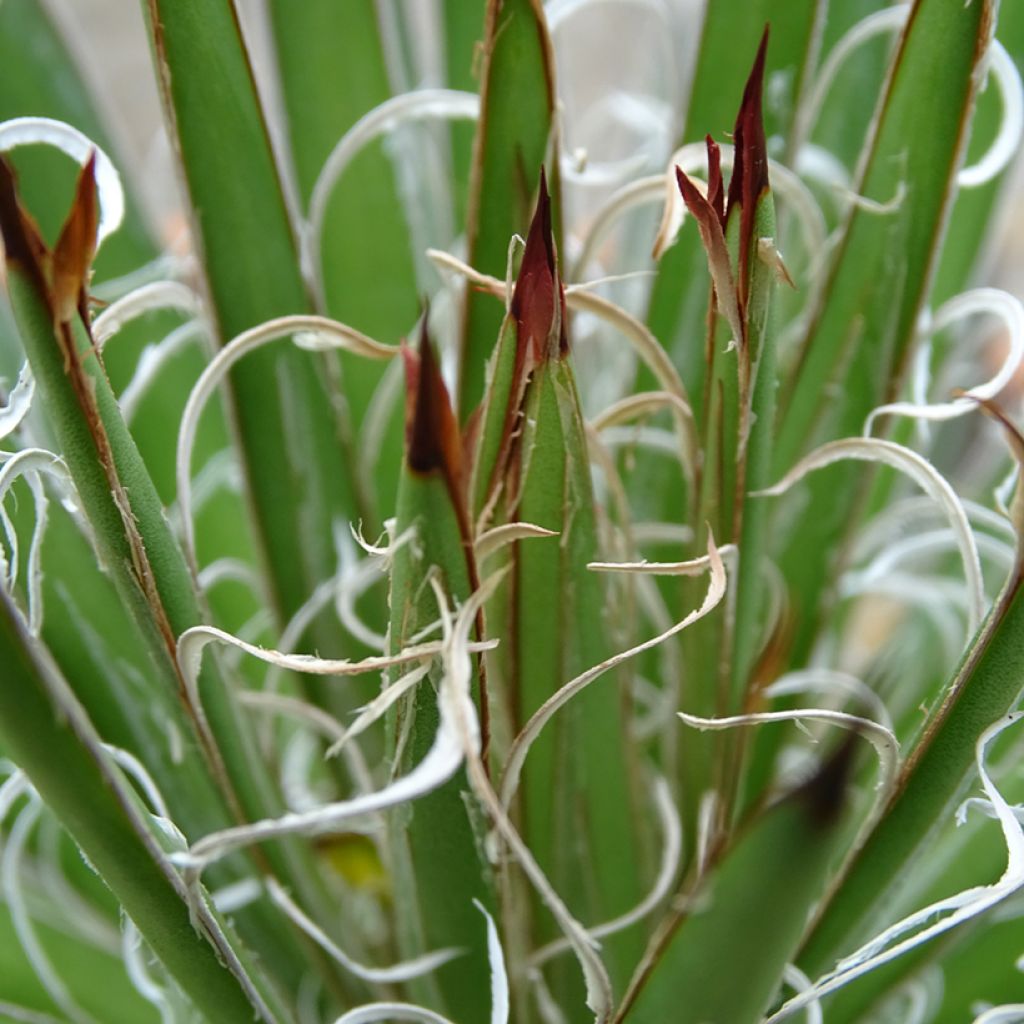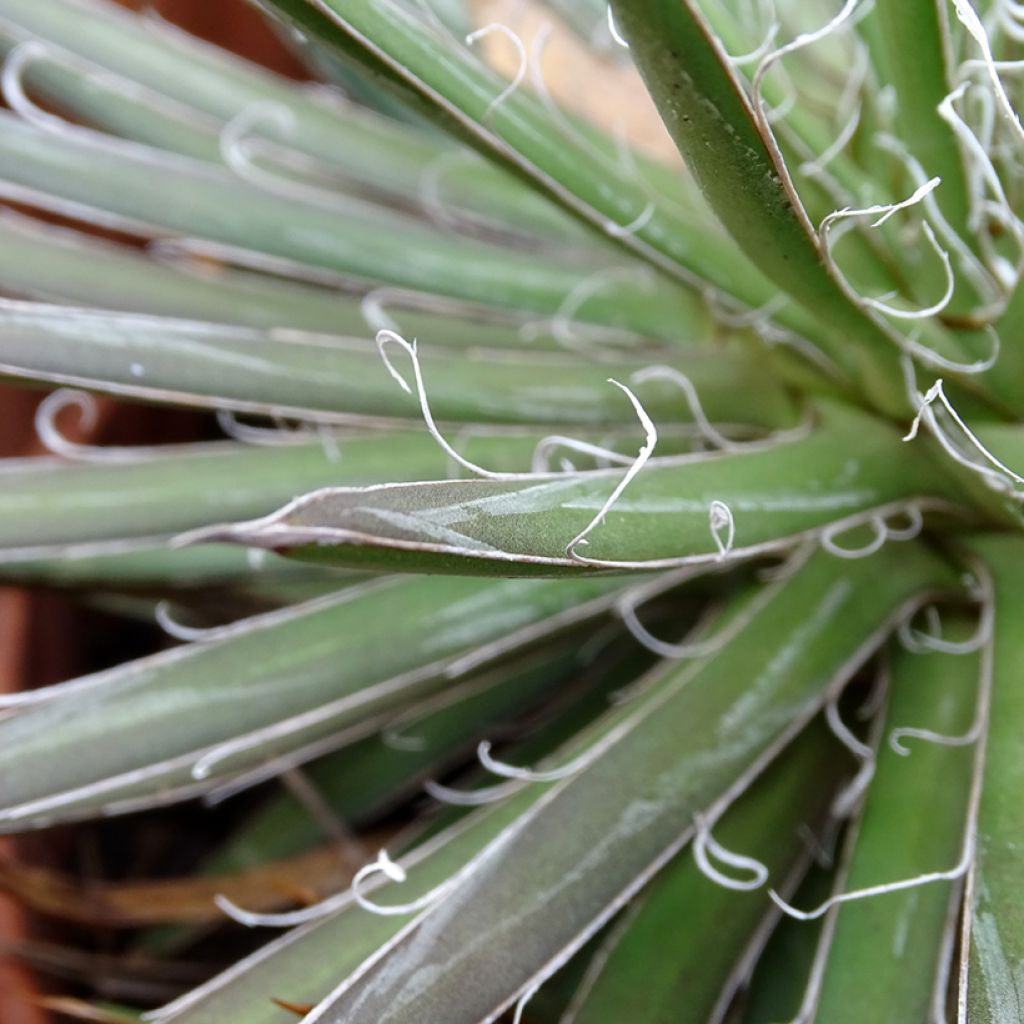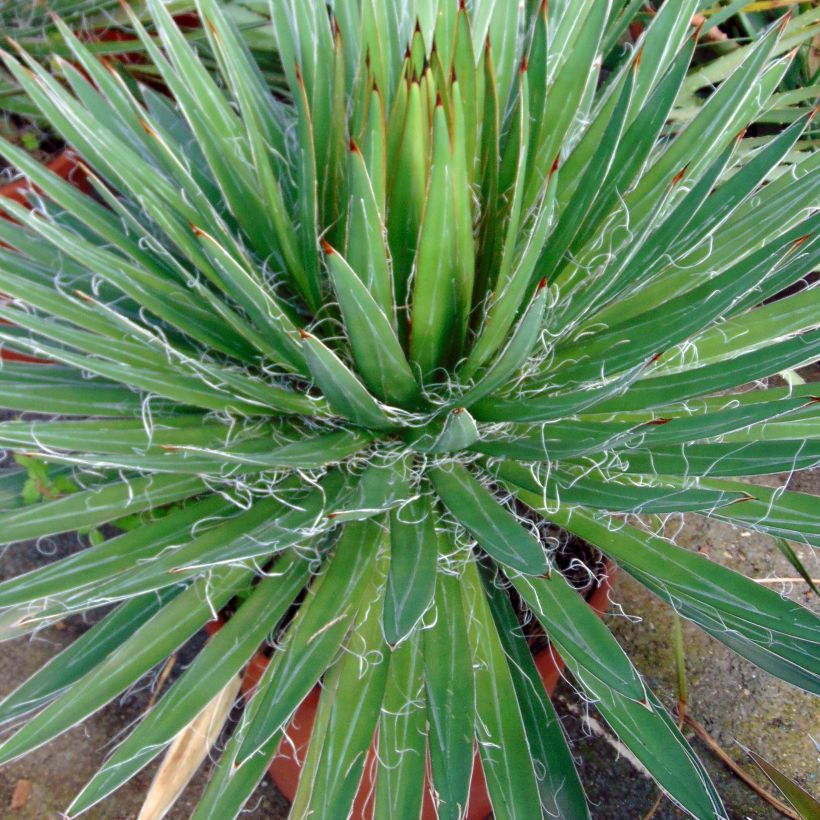

Agave filifera


Agave filifera


Agave filifera


Agave filifera


Agave filifera


Agave filifera


Agave filifera


Agave filifera
Agave filifera
Agave filifera
Since the very well designed delivery, both agaves are doing well.
Pierre, 20/11/2023
Special offer!
Receive a €20 voucher for any order over €90 (excluding delivery costs, credit notes, and plastic-free options)!
1- Add your favorite plants to your cart.
2- Once you have reached €90, confirm your order (you can even choose the delivery date!).
3- As soon as your order is shipped, you will receive an email containing your voucher code, valid for 3 months (90 days).
Your voucher is unique and can only be used once, for any order with a minimum value of €20, excluding delivery costs.
Can be combined with other current offers, non-divisible and non-refundable.
Home or relay delivery (depending on size and destination)
Schedule delivery date,
and select date in basket
This plant carries a 12 months recovery warranty
More information
We guarantee the quality of our plants for a full growing cycle, and will replace at our expense any plant that fails to recover under normal climatic and planting conditions.

Would this plant suit my garden?
Set up your Plantfit profile →
Description
The Agave filifera is a miniature cousin of the monumental Agave from Mexico, whose rosette does not exceed 50 cm (19.7in) in all directions. It owes its species name, filifera, to the long filaments that border its narrow leaves. The originality of this small development of the species also comes from the particular construction of its rosette of leaves: dense and radiating, almost hemispherical, it is composed of leaves arched in the same direction that give a very beautiful impression of movement. It is also a well-armed agave, equipped with sharp points to be wary of. The flowering is a beautiful surprise, emerging from the heart of the oldest rosettes, in the form of majestic floral spikes carrying panicles of yellow-green flowers. Agaves naturally structure exotic and wild landscapes, in the ground in mild climates, but also in large pots to be protected in winter in all regions.
Native to the vast area west of Mexico, the Agave filifera is primarily a botanical species adapted to mountainous and semi-desert climates. This botanical species is found in the foothills of the Sierra Madre Occidental in the centre of the state of Sonora, famous for its desert, as well as at altitudes between 1500m (4921.3ft) and 2200m (7217.8ft) north of the state of Sonaloa. It belongs to the agave family, just like Yuccas or Tuberose. This succulent perennial plant has rhizomes capable of producing suckers, but it is almost devoid of aerial stems. It is composed of succulent triangular, narrow, elongated leaves, dark green to yellowish-green, slightly curved upwards. They show white lines, which are marks printed by the waxy white margins of neighbouring leaves. These margins do not bear spines, but disintegrate into long whitish filaments. Each leaf is equipped with a grey terminal spine, 1 to 2cm (0.8in) long. The leaves located at the heart of the rosette often have margins tinted with red-orange. When a rosette reaches the venerable age of 15 to 20 years or more, it produces a floral spike reaching 1.5 to 2m (6.6ft) in height bearing many horizontal branches. The branches bear flattened and spherical panicles, composed of a myriad of small yellow-green tubular flowers. The rosette, called semelparous, dies after flowering, which lasts several months, having produced many small peripheral rosettes to ensure its reproduction.
In mild climates, this agave will find its place in a large rockery, on an arid slope, or in a raised bed whose soil has been enriched with gravel or coarse sand. It can be grouped with frost-resistant prickly pears such as Opuntia humifusa Millevaches, the giant fennel, hardy candle cacti (Cleistocactus strausii, Cylindropuntia imbricata), and ground-cover plants like dwarf artemisias, Rhodanthemum, Ajania pacifia. Gardeners in colder regions can plant it in a very large pot on the terrace, carefully choosing the most sheltered spot in full sun. This hardy plant, down to about -12°C (10.4F) in well-drained soil, can become invasive where it thrives.
The Agave is also an edible plant, used in Mexico to make mescal, an alcoholic beverage obtained by fermenting its juice rich in sugars. It is also used in traditional medicine in Mexico, Brazil, and India, and has proven antifungal properties. Very attractive to bees and nectar-feeding insects, the inflorescences attract many pollinators.
Report an error about the product description
Agave filifera in pictures




Flowering
Foliage
Plant habit
Botanical data
Agave
filifera
Agavaceae
North America
Other Agave
View all →Planting and care
Plant Agave filifera in full sun, preferably in a poor soil, even stony, chalky, sandy, but well-drained: It dislikes winter humidity combined with severe cold, and tolerates perfectly arid conditions and dry soils in summer. It will withstand temperatures down to approximately -12°C (10.4°F). It should be cultivated in a large, wide pot, preferably terracotta or in a wooden container. It must be stored indoors or in a cold greenhouse during winter, protected from heavy frosts.
Planting period
Intended location
Care
-
, onOrder confirmed
Reply from on Promesse de fleurs
Similar products
Haven't found what you were looking for?
Hardiness is the lowest winter temperature a plant can endure without suffering serious damage or even dying. However, hardiness is affected by location (a sheltered area, such as a patio), protection (winter cover) and soil type (hardiness is improved by well-drained soil).

Photo Sharing Terms & Conditions
In order to encourage gardeners to interact and share their experiences, Promesse de fleurs offers various media enabling content to be uploaded onto its Site - in particular via the ‘Photo sharing’ module.
The User agrees to refrain from:
- Posting any content that is illegal, prejudicial, insulting, racist, inciteful to hatred, revisionist, contrary to public decency, that infringes on privacy or on the privacy rights of third parties, in particular the publicity rights of persons and goods, intellectual property rights, or the right to privacy.
- Submitting content on behalf of a third party;
- Impersonate the identity of a third party and/or publish any personal information about a third party;
In general, the User undertakes to refrain from any unethical behaviour.
All Content (in particular text, comments, files, images, photos, videos, creative works, etc.), which may be subject to property or intellectual property rights, image or other private rights, shall remain the property of the User, subject to the limited rights granted by the terms of the licence granted by Promesse de fleurs as stated below. Users are at liberty to publish or not to publish such Content on the Site, notably via the ‘Photo Sharing’ facility, and accept that this Content shall be made public and freely accessible, notably on the Internet.
Users further acknowledge, undertake to have ,and guarantee that they hold all necessary rights and permissions to publish such material on the Site, in particular with regard to the legislation in force pertaining to any privacy, property, intellectual property, image, or contractual rights, or rights of any other nature. By publishing such Content on the Site, Users acknowledge accepting full liability as publishers of the Content within the meaning of the law, and grant Promesse de fleurs, free of charge, an inclusive, worldwide licence for the said Content for the entire duration of its publication, including all reproduction, representation, up/downloading, displaying, performing, transmission, and storage rights.
Users also grant permission for their name to be linked to the Content and accept that this link may not always be made available.
By engaging in posting material, Users consent to their Content becoming automatically accessible on the Internet, in particular on other sites and/or blogs and/or web pages of the Promesse de fleurs site, including in particular social pages and the Promesse de fleurs catalogue.
Users may secure the removal of entrusted content free of charge by issuing a simple request via our contact form.
The flowering period indicated on our website applies to countries and regions located in USDA zone 8 (France, the United Kingdom, Ireland, the Netherlands, etc.)
It will vary according to where you live:
- In zones 9 to 10 (Italy, Spain, Greece, etc.), flowering will occur about 2 to 4 weeks earlier.
- In zones 6 to 7 (Germany, Poland, Slovenia, and lower mountainous regions), flowering will be delayed by 2 to 3 weeks.
- In zone 5 (Central Europe, Scandinavia), blooming will be delayed by 3 to 5 weeks.
In temperate climates, pruning of spring-flowering shrubs (forsythia, spireas, etc.) should be done just after flowering.
Pruning of summer-flowering shrubs (Indian Lilac, Perovskia, etc.) can be done in winter or spring.
In cold regions as well as with frost-sensitive plants, avoid pruning too early when severe frosts may still occur.
The planting period indicated on our website applies to countries and regions located in USDA zone 8 (France, United Kingdom, Ireland, Netherlands).
It will vary according to where you live:
- In Mediterranean zones (Marseille, Madrid, Milan, etc.), autumn and winter are the best planting periods.
- In continental zones (Strasbourg, Munich, Vienna, etc.), delay planting by 2 to 3 weeks in spring and bring it forward by 2 to 4 weeks in autumn.
- In mountainous regions (the Alps, Pyrenees, Carpathians, etc.), it is best to plant in late spring (May-June) or late summer (August-September).
The harvesting period indicated on our website applies to countries and regions in USDA zone 8 (France, England, Ireland, the Netherlands).
In colder areas (Scandinavia, Poland, Austria...) fruit and vegetable harvests are likely to be delayed by 3-4 weeks.
In warmer areas (Italy, Spain, Greece, etc.), harvesting will probably take place earlier, depending on weather conditions.
The sowing periods indicated on our website apply to countries and regions within USDA Zone 8 (France, UK, Ireland, Netherlands).
In colder areas (Scandinavia, Poland, Austria...), delay any outdoor sowing by 3-4 weeks, or sow under glass.
In warmer climes (Italy, Spain, Greece, etc.), bring outdoor sowing forward by a few weeks.



















































